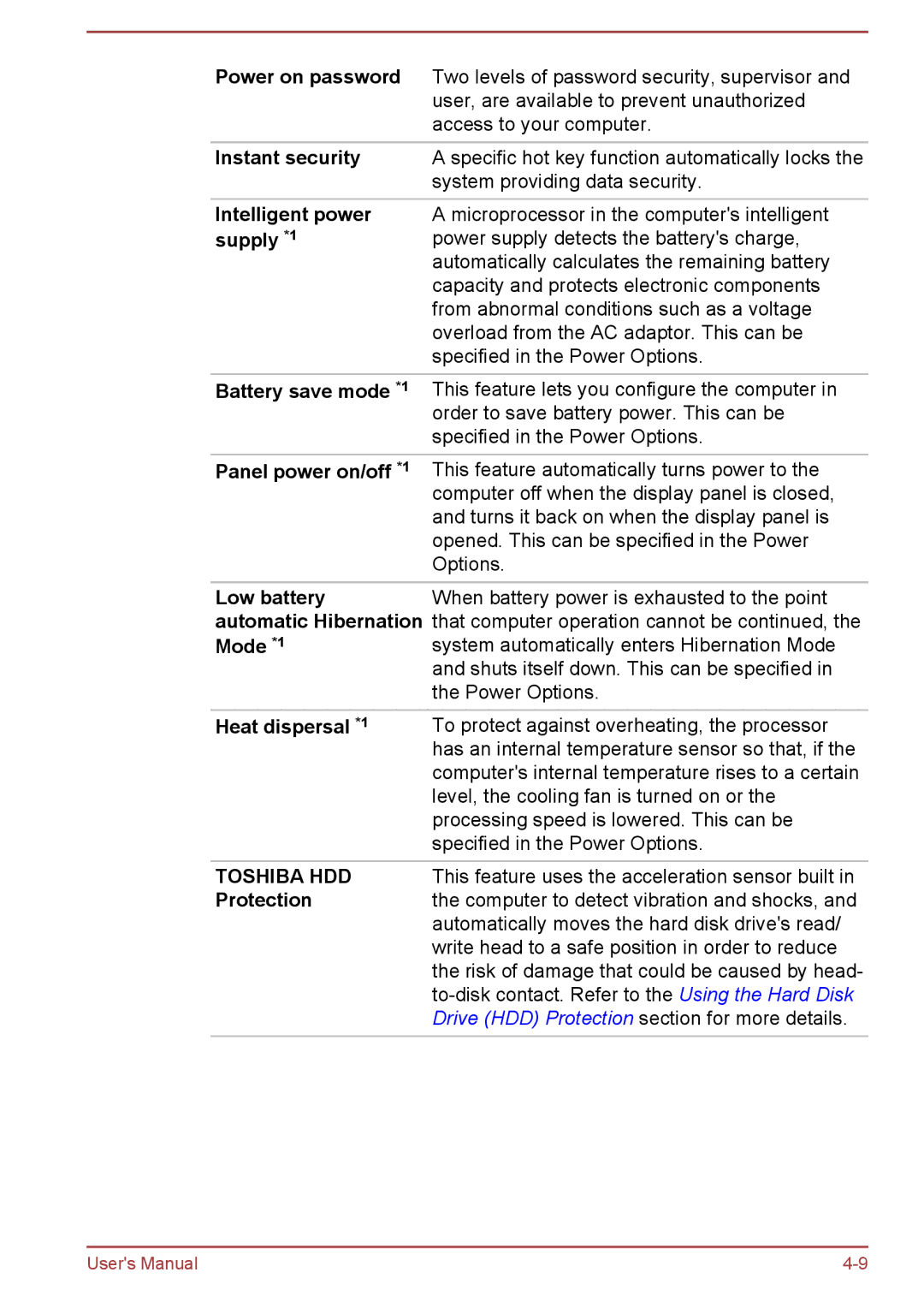
Power on password | Two levels of password security, supervisor and |
| user, are available to prevent unauthorized |
| access to your computer. |
|
|
Instant security | A specific hot key function automatically locks the |
| system providing data security. |
Intelligent power supply *1
A microprocessor in the computer's intelligent power supply detects the battery's charge, automatically calculates the remaining battery capacity and protects electronic components from abnormal conditions such as a voltage overload from the AC adaptor. This can be specified in the Power Options.
Battery save mode *1 | This feature lets you configure the computer in |
| order to save battery power. This can be |
| specified in the Power Options. |
|
|
Panel power on/off *1 | This feature automatically turns power to the |
| computer off when the display panel is closed, |
| and turns it back on when the display panel is |
| opened. This can be specified in the Power |
| Options. |
|
|
Low battery | When battery power is exhausted to the point |
automatic Hibernation | that computer operation cannot be continued, the |
Mode *1 | system automatically enters Hibernation Mode |
| and shuts itself down. This can be specified in |
| the Power Options. |
|
|
Heat dispersal *1 | To protect against overheating, the processor |
| has an internal temperature sensor so that, if the |
| computer's internal temperature rises to a certain |
| level, the cooling fan is turned on or the |
| processing speed is lowered. This can be |
| specified in the Power Options. |
|
|
TOSHIBA HDD | This feature uses the acceleration sensor built in |
Protection | the computer to detect vibration and shocks, and |
| automatically moves the hard disk drive's read/ |
| write head to a safe position in order to reduce |
| the risk of damage that could be caused by head- |
| |
| Drive (HDD) Protection section for more details. |
User's Manual |
